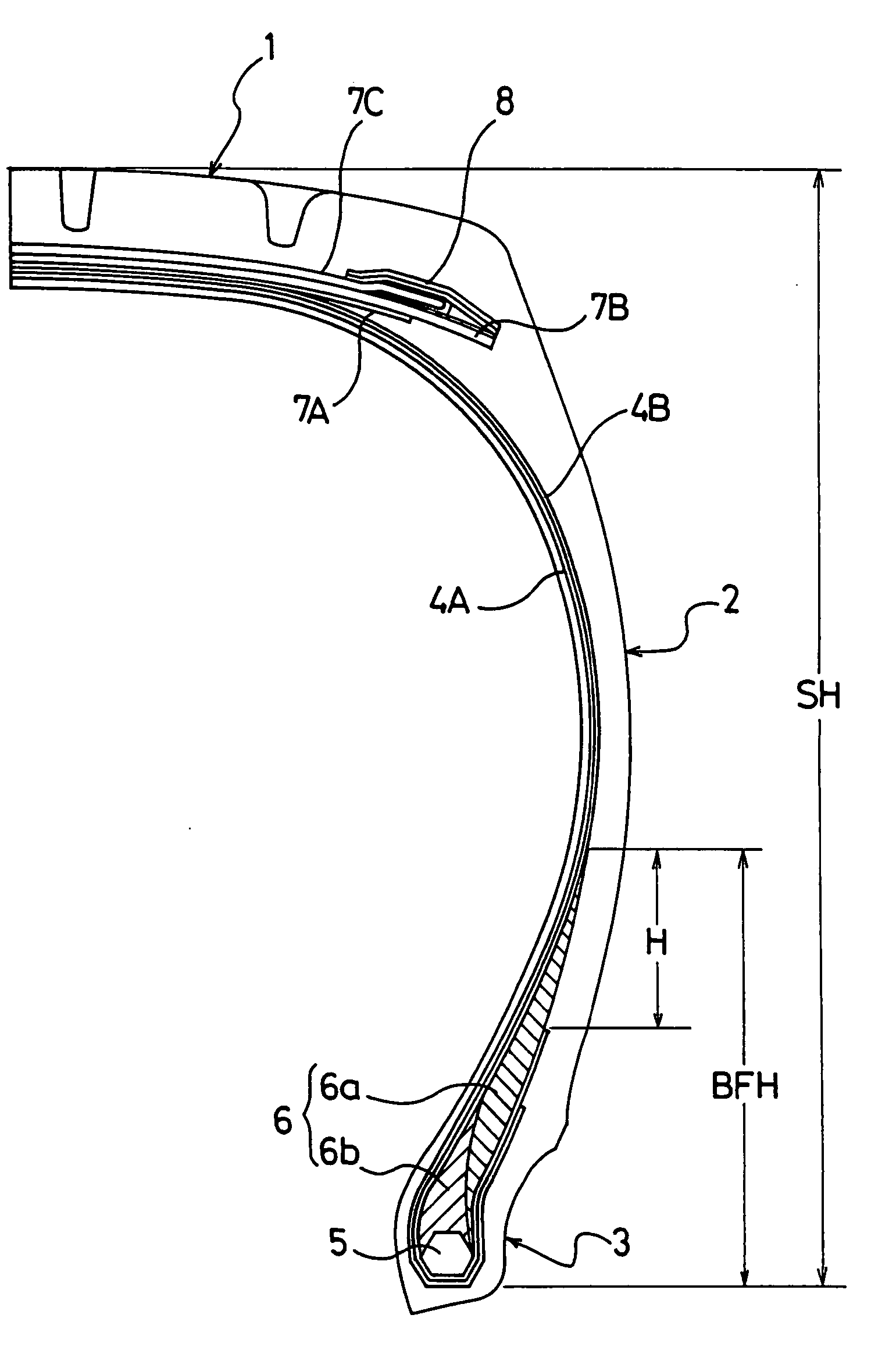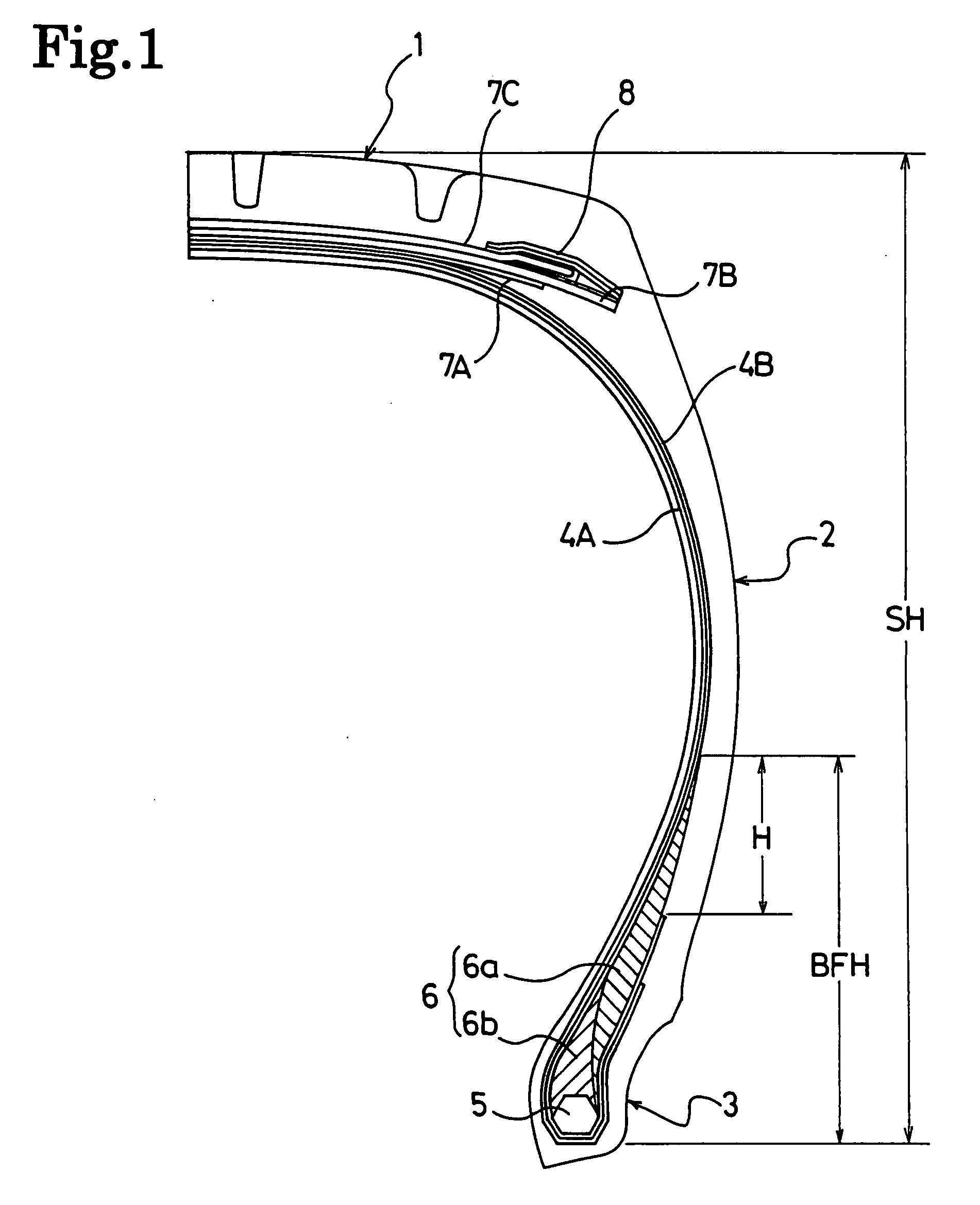Pneumatic Tire
a technology of pneumatic tires and lateral stiffness, applied in the field of pneumatic tires, to achieve the effects of reducing rolling resistance, maintaining lateral stiffness, and enhancing durability
- Summary
- Abstract
- Description
- Claims
- Application Information
AI Technical Summary
Benefits of technology
Problems solved by technology
Method used
Image
Examples
examples
[0026] Tires of Examples 1 and 2 and Comparative Examples 1 to 6 were prepared as follows. In pneumatic radial tires for a light truck each of which a tire size is 195 / 75R15 and an air pressure corresponding to the maximum load capacity thereof is 600 kPa, a bead filler of each of the tires includes two different rubber layers stacked in a radial direction of the tire. In each of the pneumatic tires, a cross-sectional area S1, a hardness Hs1, a loss tangent tan δ1 of the rubber layer on the outermost side, and a cross-sectional area S2, a hardness Hs2, a loss tangent tan δ2 of the rubber layer on the innermost peripheral side, and a ratio of a height BFH of the bead filler to a cross-sectional height SH of the tire were set variously different from those in the other ones of the pneumatic tires. Additionally, for the purpose of comparison, a pneumatic radial tire for a light truck (Prior Art) was prepared, the pneumatic radial tire being provided with a bead filler constituted of on...
PUM
 Login to View More
Login to View More Abstract
Description
Claims
Application Information
 Login to View More
Login to View More - Generate Ideas
- Intellectual Property
- Life Sciences
- Materials
- Tech Scout
- Unparalleled Data Quality
- Higher Quality Content
- 60% Fewer Hallucinations
Browse by: Latest US Patents, China's latest patents, Technical Efficacy Thesaurus, Application Domain, Technology Topic, Popular Technical Reports.
© 2025 PatSnap. All rights reserved.Legal|Privacy policy|Modern Slavery Act Transparency Statement|Sitemap|About US| Contact US: help@patsnap.com


